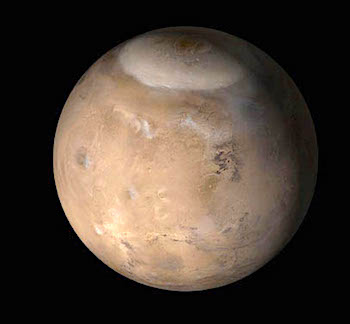 A University of Oklahoma astrophysics team explains why the growth of Mars was stunted by an orbital instability among the outer solar system’s giant planets in a new study on the evolution of the young solar system.
A University of Oklahoma astrophysics team explains why the growth of Mars was stunted by an orbital instability among the outer solar system’s giant planets in a new study on the evolution of the young solar system.
The OU study [published in the journal Icarus] builds on the widely-accepted Nice Model, which invokes a planetary instability to explain many peculiar observed aspects of the outer solar system. An OU model used computer simulations to show how planet accretion (growth) is halted by the outer solar system instability. Without it, Mars possibly could have become a larger, habitable planet like Earth.
“This study offers a simple and more elegant solution for why Mars is small, barren and uninhabitable,” said Matthew S. Clement, OU graduate student in the Homer L. Dodge Department of Physics and Astronomy, OU College of Arts and Sciences. “The particular dynamics of the instability between the giant planets kept Mars from growing to an Earth-mass planet.”
Clement and Nathan A. Kaib, OU astrophysics professor, worked with Sean N. Raymond, the University of Bordeaux, France, and Kevin J. Walsh, Southwest Research Institute, to investigate the effect of the Nice Model instability on the process of terrestrial planetary formation. The research team used computing resources provided by the OU Supercomputing Center for Education and Research and the Blue Waters sustained peta-scale computing project to perform 800 computer simulations of this scenario. [More at links]








